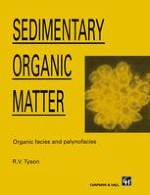1995 | Buch
Über dieses Buch
A sound understanding of the global carbon cycle requires an appreciation of the various physico-chemical and biological processes that determine the production, distribution, deposition and diagenesis of organic matter in the natural environment. This book is a comprehensive interdisciplinary synthesis of this information, coupled with an organic facies approach based on data from both microscopy and bulk organic geochemistry.
Anzeige
